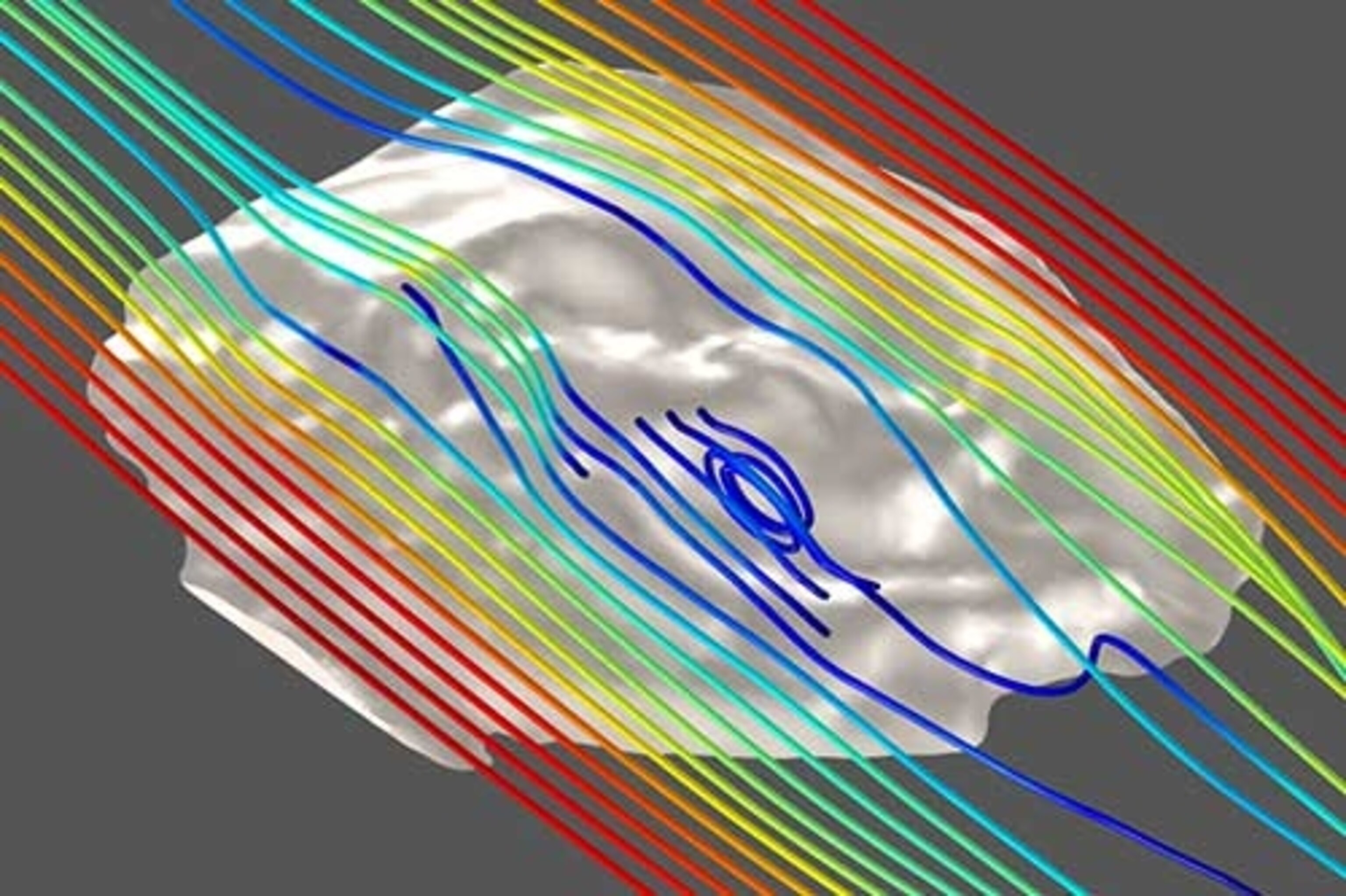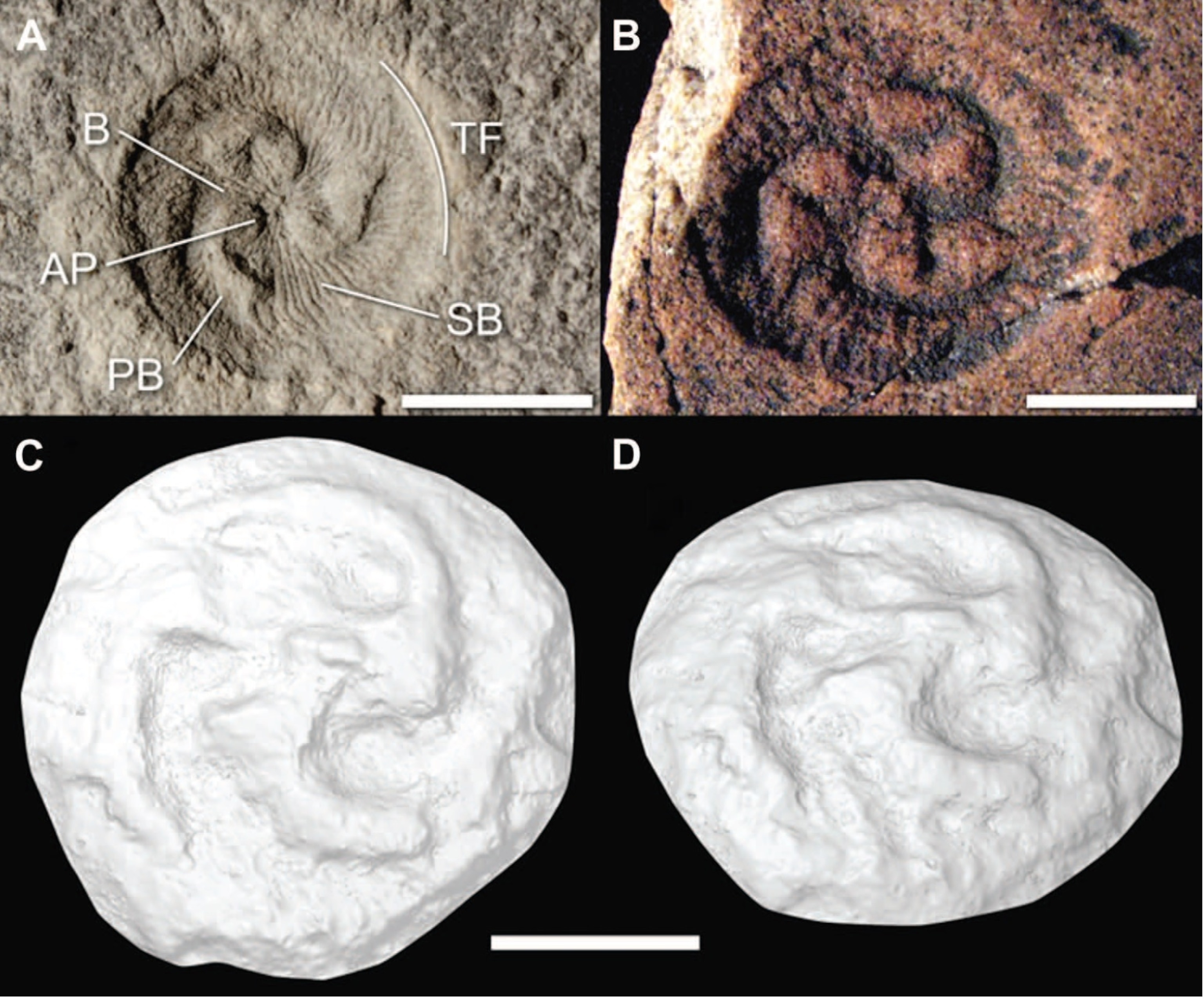If you like enigmatic blobs, then you would have loved the Ediacaran. Back then, between 575 and 541 million years ago, much of life came in a range of fronds, pancakes, and medallions that have puzzled and inspired paleontologists for decades. Some of them were animals. Others were forms of life that defy categorization. But even though mysteries still abound, paleontologist Imran Rahman and colleagues have solved one aspect of how a particular species of Ediacaran oddball fed and what that meant for the evolution of our seas.
Rahman and coauthors settled on a tiny button of an organism named Tribrachidium heralicum. This circular, triple-ridged species has been found in marine rocks in South Australia, Russie, and Ukraine dating between 555 and 550 million years old. No one knows exactly what the organism is – the species has triradiate symmetry, which no animal possesses today – but, through fluid dynamics experiments, Rahman and colleagues were able to determine that Tribrachidium now holds the title of the oldest filter-feeder yet known.

Up until now, most Ediacaran critters were thought to be osmotrophs. That means they passively absorbed organic particles that they either shuffled over or that fell upon them. But Rahman and coauthors found that current flow over the surface of Tribrachidium directed water towards the apex of the organism, over small branches called a “tentacular fringe” and into specialized pits. As water carrying little organic tidbits flowed over Tribrachidium, in other words, the organism’s shape directed that water upwards to a spot where the flow lost some of its speed and dropped the tiny organic morsels to a place where they could be consumed.
That food didn’t just fall from above. Tribrachidium lived during a time when expansive organic mats covered much of the seabottom, Rahman and colleagues point out, and when currents shook up all that muck some of the organic particles were thrown back up into the mix. The fact that the shape of Tribrachidium had the same filtering effect regardless of current direction is a sign that it made the most of habitats where water frequently sloshed the organic debris around.
At about 10 million years before the onset of the “Cambrian explosion“, when animal life ran riot for the first time, this new discovery adds a new dimension to how life changed the seas. Tribrachidium was likely an “ecosystem engineer”, Rahman and coauthors write, removing organic material from the water column that helped more light shine in and oxygenated the water column. This early pop could have been important in setting up one of evolution’s most explosive chapters.
Reference:
Rahman, I., Darroch, S., Racicot, R., Laflamme, M. 2015. Suspension feeding in the enigmatic Ediacaran organisms Tribrachidium demonstrates complexity of Neoproterozoic ecosystemsSuspension feeding in the enigmatic Ediacaran organisms Tribrachidium demonstrates complexity of Neoproterozoic ecosystemsSuspension feeding in the enigmatic Ediacaran organisms Tribrachidium demonstrates complexity of Neoproterozoic ecosystems. Science Advances. doi: 10.1126/sciadv.1500800
